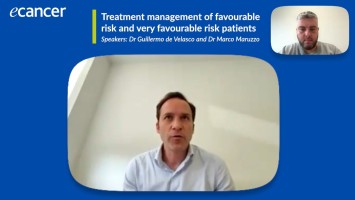Basically the study consisted of patients who were aged about 65 with metastatic breast cancer. We had a total of 53 patients in the study, most of them were on palbociclib but five patients were on abemaciclib along with the endocrine therapy. We tried to look for the overall PFS as well as the toxicity and tolerability of the drugs in this particular patient population. What we did notice was the majority of the patients tolerated the treatment quite well. A few patients, about 19 patients, needed dose modifications and discontinued the drug or needed a change in the drug overall but we did notice that most patients did tolerate it quite well.
In terms of toxicity, I would think most patients did have some kind of toxicity and the most common one was neutropenia, as expected. The second most common toxicity was GI toxicity and the elderly population did have more frequent or more number of toxicities and the median toxicity there was about 2 to 1. Probably the significant toxicity was the grade 3 and 4 neutropenia which was statistically significant in the elderly population compared to the younger age group. The PFS was quite similar among both age groups and the overall PFS at 36 months was about 61%.
What is the significance of these results?
The problem with this particular subgroup of patients, or the elderly population, is that most of the trial detail that we have usually tends to concentrate on patients, or usually includes patients, from a younger population. So generally patients above the age of 65 do not get represented in trial data. This trial data is what we then later extrapolate while making guidelines as well as while treating patients. So often what happens is that with this particular subgroup of patients who have completely different disease or completely different biology of physical tolerance and probably keep pharmacokinetics and dynamics end up having doses and dose modifications and things done purely based on the physician discretion without too much supporting evidence.
So the idea was to try and get some supporting evidence in this particular population to say that this standard of care is quite safe, which is what we have proved. So quite happy with the results and hoping that this will help other physicians give the drug more easily.








